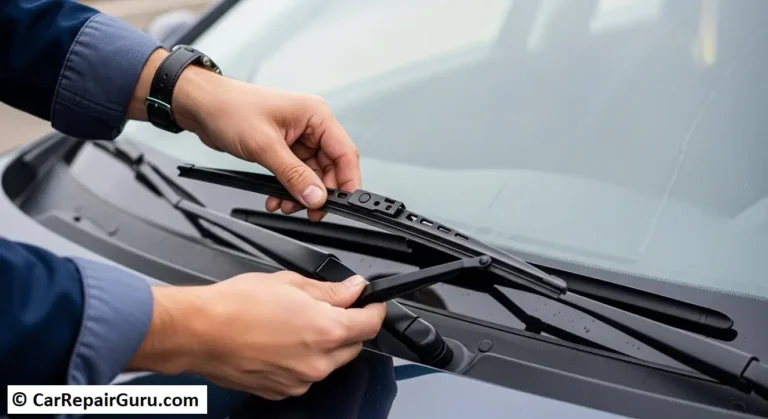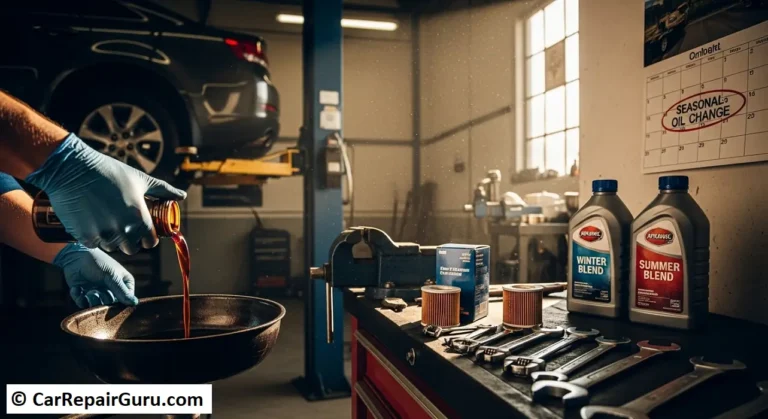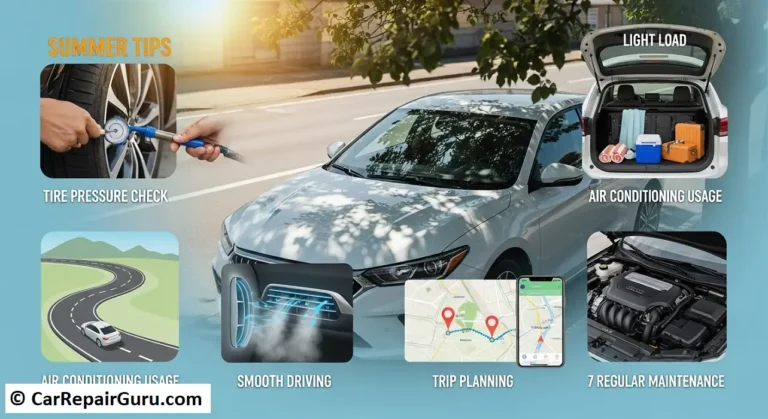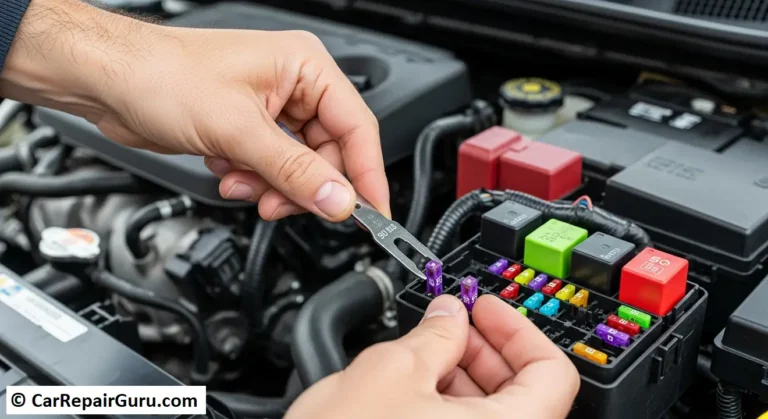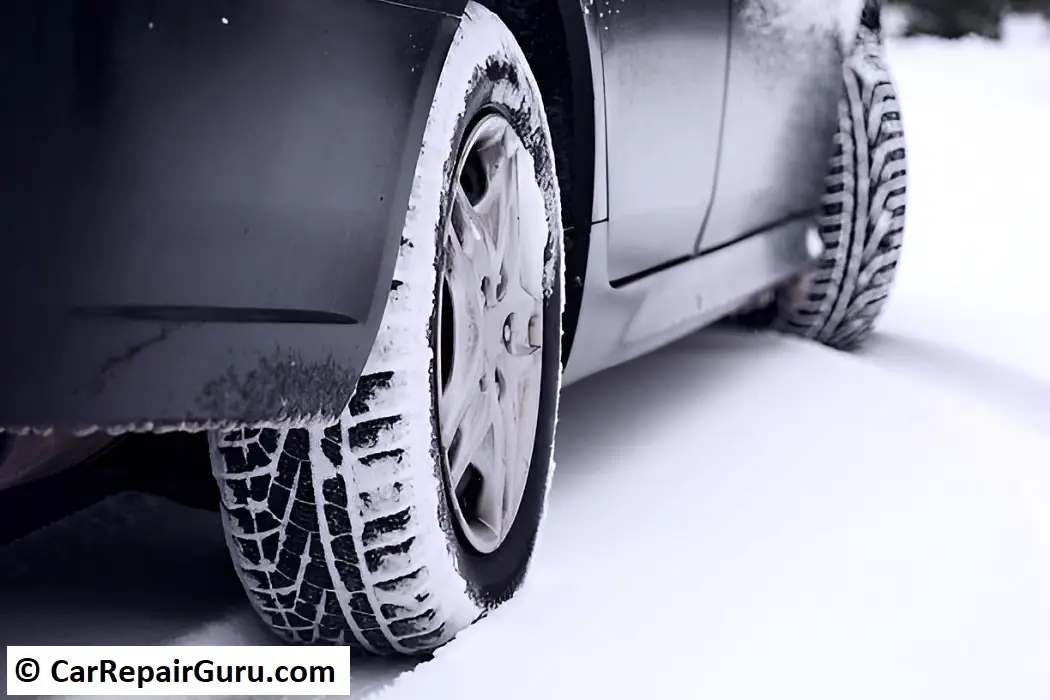
When the temperature drops and roads get icy, winter tires are essential for safe driving. They’re made to handle cold weather, offering better traction, braking, and handling than all-season tires.
Unlike all-season tires, which harden in the cold, winter tires stay flexible. This helps them grip the road better, especially on snow and ice.
Their tread patterns are deeper and designed to push away snow and slush. This means shorter braking distances and more control in tough winter conditions.
If you drive in cold, snowy weather, winter tires can make a big difference in safety and performance. In this guide, we’ll explore the types of winter tires, top picks for 2025, maintenance tips, and more.
Types of Winter Tires
When choosing the right winter tires, it’s important to understand the two main types: studded and studless. Each has its advantages, depending on driving conditions and local regulations.
Studded Winter Tires: Maximum Grip on Ice
Studded winter tires are designed for drivers who frequently encounter icy roads and hard-packed snow. These tires feature small metal studs embedded in the tread, which dig into ice and compacted snow, providing superior traction and braking performance.
How Studded Tires Improve Ice Grip and Braking Distance
On icy surfaces, regular winter tires may struggle to maintain control, especially during sudden braking or sharp turns. The metal studs act like tiny ice picks, breaking through the slick layer and gripping the road. This significantly reduces braking distance, making driving in extreme cold weather conditions safer.
However, while studded tires excel on ice, they can be noisy and rough on dry pavement. They may also cause road damage, which leads to restrictions in some areas.
Legal Considerations for Studded Tires
Not all regions allow studded tires due to their impact on asphalt. Some states and countries prohibit them entirely, while others allow them only during specific winter months. If you’re considering studded winter tires, check local regulations to ensure they’re permitted.
Studless Winter Tires: Advanced Cold Weather Performance
For drivers who need excellent snow traction without metal studs, studless winter tires are a great option. These tires use advanced rubber compounds that stay soft and flexible in freezing temperatures, unlike regular all-season tires, which harden and lose grip.
How Snow Traction and Rubber Compounds Help in Sub-Zero Temperatures
The deep tread patterns and thousands of tiny sipes (slits in the tread) help studless winter tires grip snow and ice by increasing surface contact. This enhances braking, acceleration, and cornering stability in sub-zero temperatures without the need for metal studs.
Choosing between studded and studless winter tires depends on your driving conditions. If you frequently drive on icy roads, studded tires may be worth considering—where allowed. For general winter driving, studless tires provide excellent cold weather performance without damaging the road.
Best Winter Tires for 2025: Top Recommendations
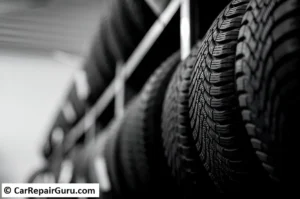
Finding the right winter tires can make a huge difference in safety and comfort during cold weather. Whether you’re driving a compact car, a performance vehicle, or a heavy-duty SUV, here are the top-rated winter tires for 2025 to match your needs and budget.
1. Best Overall Winter Tire – Bridgestone Blizzak WS90
The Blizzak WS90 continues to dominate the winter tire market with its unbeatable balance of performance, safety, and price. It’s designed with multi-cell rubber compounds and biting edge tread patterns for excellent traction on snow and ice. It also features improved tread life compared to its predecessors, making it a reliable long-term investment for daily winter driving. Ideal for sedans and compact cars.
2. Best Budget-Friendly Winter Tire – General Altimax Arctic 12
For drivers seeking solid performance at a lower price, the General Altimax Arctic 12 is a standout. This studdable winter tire performs well on packed snow and icy roads thanks to its high-density sipes and directional tread. It offers a smooth, quiet ride and good durability for the price, making it a popular choice among budget-conscious drivers.
3. Best Performance Winter Tire – Michelin Pilot Alpin PA5
If you drive a sports car or performance vehicle, the Michelin Pilot Alpin PA5 is engineered for you. It offers exceptional handling at high speeds and impressive grip in snow and slush. The silica-based rubber compound stays flexible even in extreme cold, while the asymmetric tread design delivers great dry road handling. Perfect for drivers who don’t want to sacrifice performance in the winter months.
4. Best Winter Tire for SUVs and Trucks – Nokian Hakkapeliitta R5 SUV
Built for larger vehicles, the Nokian Hakkapeliitta R5 SUV is a premium studless tire designed for rugged winter conditions. It features Arctic Grip Crystals in the tread for maximum traction and durability. With reinforced sidewalls and a focus on stability, it performs reliably on icy roads, deep snow, and slushy highways. It’s also made with eco-friendly materials, appealing to environmentally conscious drivers.
Whether you prioritize affordability, performance, or durability, these top winter tires of 2025 offer excellent choices for every driving style and vehicle type. Choosing the right winter tire means safer travels, better handling, and peace of mind all season long.
Key Benefits of Winter Tires
Driving in winter conditions presents unique challenges, from slippery roads to reduced visibility. Installing winter tires is one of the most effective ways to improve safety and performance. Here’s why they are essential for cold-weather driving.
1. Enhanced Traction on Snow and Ice
One of the biggest advantages of winter tires is their ability to grip snow and ice far better than all-season tires. This is due to their specialized rubber compounds and deep tread patterns, which prevent snow buildup and maximize surface contact. The added sipes (small slits in the tread) help create extra grip, allowing for better acceleration and stability even in harsh winter conditions.
2. Shorter Braking Distances in Cold Weather
Stopping on an icy or snow-covered road can be extremely dangerous if your tires aren’t designed for the conditions. Winter tires significantly reduce braking distances, thanks to their flexible rubber compounds that remain soft in sub-zero temperatures. This prevents skidding and allows drivers to maintain better control when coming to a stop.
In fact, tests have shown that cars equipped with winter tires can stop up to 30% faster than those with all-season tires on icy roads. This difference can be life-saving in emergency situations.
3. Better Handling vs. All-Season Tires in Below-Freezing Temperatures
Unlike all-season tires, which harden in cold weather, winter tires remain pliable, providing better steering control and cornering stability. Whether you’re navigating through sharp turns, hills, or slippery intersections, winter tires ensure that your vehicle responds as expected, reducing the risk of losing control on black ice or compacted snow.
Investing in a quality set of winter tires means safer, smoother, and more confident driving throughout the cold months.
When to Install and Remove Winter Tires
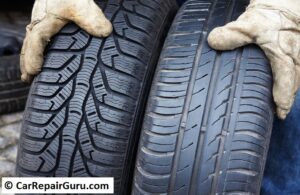
The Best Time to Install Winter Tires
Timing is crucial when switching to winter tires. Many drivers wait for the first snowfall, but the ideal time to install them is when temperatures consistently drop below 7°C (45°F). At this temperature, all-season tires begin to harden, reducing traction and braking performance. By installing winter tires early, you ensure maximum grip and safety before icy conditions begin.
When to Switch Back to Summer or All-Season Tires
Leaving winter tires on too long can lead to excessive tread wear and reduced performance. Once temperatures consistently rise above 7°C (45°F) in spring, it’s time to switch back to all-season or summer tires. This helps preserve the specialized rubber compound of your winter tires, ensuring they last for multiple seasons.
How to Store Winter Tires Properly
To extend the lifespan of your winter tires, proper storage is essential:
- Clean and dry them before storing to prevent cracking.
- Keep them in a cool, dry place away from direct sunlight and heat sources.
- Store them vertically (if possible) or stack them with a tire cover to prevent deformation.
- If mounted on wheels, hang them or place them in a tire rack to maintain shape.
By following these steps, you can ensure your winter tires remain in excellent condition for the next cold season.
Maintenance Tips for Winter Tires
Proper maintenance of winter tires ensures they last longer and perform optimally in cold weather conditions. Here are essential tips to keep them in top shape.
1. Checking Tire Pressure to Avoid Underinflation
Cold temperatures cause tire pressure to drop—typically 1–2 PSI for every 10°C (18°F) decrease. Underinflated winter tires reduce traction, increase fuel consumption, and lead to uneven tread wear.
- Check your tire pressure at least once a month and before long trips.
- Inflate tires to the manufacturer’s recommended PSI level, found in the owner’s manual or door sticker.
- If your vehicle has a Tire Pressure Monitoring System (TPMS), don’t ignore alerts, as they indicate low pressure.
2. Rotating Winter Tires for Even Tread Wear
To maximize the lifespan of winter tires, rotate them every 5,000–8,000 km (3,000–5,000 miles). This ensures even tread wear, maintaining optimal grip and handling.
- Front tires wear out faster on front-wheel drive vehicles, while rear tires wear more on rear-wheel drive models.
- Regular rotation helps distribute wear evenly, preventing premature replacement.
3. Cleaning and Storing Winter Tires Properly
Once winter ends, proper storage is crucial to keep your tires in good condition:
- Wash off salt, dirt, and road grime to prevent rubber degradation.
- Store in a cool, dry place, away from direct sunlight and heat sources.
- Use tire storage bags or covers to protect from moisture and dust.
- If mounted on rims, hang them or store them stacked to prevent deformation.
By following these winter tire maintenance tips, you’ll extend their lifespan and ensure maximum safety for every cold-weather season.
Legal and Environmental Considerations
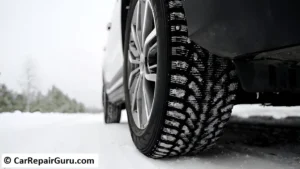
Regional Regulations on Studded Tires
Laws regarding studded winter tires vary by region. Some states and provinces allow them only during specific winter months, while others ban them entirely due to their potential to damage roads.
- In the U.S., states like Alaska and Maine permit studded tires, but others like Florida and Texas prohibit them.
- In Canada, provinces such as Ontario allow them only in certain areas, while Quebec enforces strict winter tire laws but prohibits studded tires for non-commercial vehicles.
- In Europe, countries like Sweden and Norway allow studded tires but restrict usage in urban areas to minimize road wear.
Always check local regulations before purchasing studded winter tires to avoid fines.
Environmental Impact of Winter Tires vs. All-Season Tires
While winter tires improve safety and performance, they also contribute to higher rolling resistance, leading to increased fuel consumption compared to all-season tires. Studded tires, in particular, can damage road surfaces, releasing fine particles into the air.
However, modern winter tires have improved fuel efficiency, and many manufacturers are developing eco-friendly tire compounds to reduce environmental impact.
Recycling and Disposal Options for Old Winter Tires
When winter tires wear out, proper disposal is crucial:
- Many tire retailers offer tire recycling programs, repurposing old tires into rubberized asphalt, playground surfaces, or insulation materials.
- Some municipalities accept used tires for environmentally friendly disposal.
- Never burn or dump old tires, as they release toxic chemicals harmful to the environment.
By choosing responsible recycling options, you can reduce waste and contribute to a greener planet.
Conclusion
Investing in winter tires is one of the best decisions you can make for safe and reliable driving in cold-weather conditions. With superior traction, shorter braking distances, and improved handling, they significantly reduce the risks associated with snowy and icy roads.
From choosing between studded and studless options to selecting the best winter tires for your vehicle, proper knowledge ensures optimal performance and longevity. Regular maintenance, correct installation timing, and proper storage further enhance their effectiveness.
Additionally, understanding legal restrictions and the environmental impact of winter tires can help you make responsible decisions while ensuring compliance with regional regulations.
By switching to winter tires at the right time and following essential care tips, you can enjoy safer, smoother, and more confident driving throughout the winter season.
Winter Tires FAQ
Are winter tires better than all-season tires?
Yes, winter tires offer better traction, handling, and braking on snow and ice compared to all-season tires, thanks to their specialized rubber and tread design.
Do I need winter tires if my car has all-wheel drive?
Yes, AWD helps with acceleration, but only winter tires provide the necessary grip for safe braking and cornering in snowy or icy conditions.
How long do winter tires last?
With proper care, winter tires typically last 4-6 seasons, depending on your driving habits and the level of tread wear.
Can I use winter tires all year round?
No, winter tires wear out quickly in warmer temperatures and don’t offer optimal handling in dry conditions.
What’s the difference between studded and studless winter tires?
Studded tires provide extra grip on ice but are restricted in some areas, while studless tires use advanced rubber compounds and tread designs for better snow traction.
